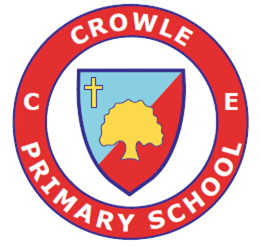English Interventions
English is broken down into three areas - reading, writing and speaking and listening. Children can experience barriers to their learning in a single area or multiple areas.
We have high aspirations for all our children. In acknowledging that our pupils, identified as SEND and those who have barriers to their learning in a single subject, can be fully immersed in the English curriculum alongside their peers through well pitched, matched and differentiated lessons. The introduction of whole school approaches to reading, writing and spelling ensures that a consistent approach is maintained across the school.
What does a writing lesson look like for a child who is working towards expected attainment?
The writing lesson will not look obviously different for these children due to the skills of the class teachers in matching the objective to the cohort and pitching the pace and writing features carefully. The teacher then differentiates the resources and the quantity of writing. Teaching assistants are deployed to children who may need further explanation during the whole class learning or additional support during independent tasks. Concrete resources, working walls and modeled sentences are available for all learners throughout the lesson. Designing the way we deliver writing in this way has increased inclusion in writing lessons. Pupils who experience difficulties with the mechanics of handwriting may access written recording through a scribe, voice activated software, typing or adapted writing paper and pencils.
What does a guided reading lesson look like for a child who is working towards expected attainment?
Again the guided reading lesson will not appear any different for a child with additional needs than it does for their peers. The move to whole class guided reading offers mixed ability groupings. As a result pupils with difficulties in reading are exposed to age appropriate texts and discussions relating to comprehension skills. Highlighted texts, symbols and differentiated activities are used to ensure deep understanding of the text. Teaching assistants are available to support as required. Children diagnosed with a visual and or visual perceptual barrier to reading may use coloured overlays, double spaced texts, texts printed in larger or coloured fonts on a variety of paper types.
What does a writing lesson look like for a child who is working significantly below the expected attainment level/key stage?
All reasonable adjustments will have been implemented in consultation with the SENDCo and possibly outside agencies. They will be working where ever practical on the same objective just at a lower level, this enables them to work in the classroom, benefiting from teacher input as well as working with a teaching assistant. The writing presented will be matched to the level they are working within and is likely to be differentiated so that they produce a sustained quantity and quality of writing. There may be some occasions where their level cannot be matched to the class objective - in these cases it may be beneficial for them to work with a teaching assistant away from their peers. Symbol supports, recording devices and sentence building cards are some of the resources available to this group of students.
What extra support will my child receive to close the gaps?
We are developing a range of interventions that can meet individual needs of our pupils. There is no one size fits all in teaching children with SEND.
Our maths intervention plan includes the following:
Colourful Semantics is used within the writing and reading lessons. Colourful semantics is an approach created by Alison Bryan. It is aimed at helping children to develop their grammar but it is rooted in the meaning of words (semantics). Colourful semantics reassembles sentences by cutting them up into their thematic roles and then colour codes them.
Gross Motor Groups is an intervention that runs weekly in small groups. The groups are run by our PE coach Reece. In working on children's core stability and shoulder strength the children have better sitting positions for writing and they have enough control to manipulate a pencil thus improving the quality and quantity of their handwriting.
Jimbo Fun was developed to aid early identification of children who lack essential pre-writing motor skills and provide an effective "catch-up" intervention programme. It also works on developing correct letter formation. These two essential areas of handwriting are vital for developing an efficient script and preventing handwriting problems later on. Jimbo Fun is carried out three times a week in small groups, lead by Phoebe Simpson.
Write From The Start Write from the start offers a radically different approach that will guide a child through the various stages of perceptual and fine-motor development to lay the foundations for flowing, accurate handwriting. This approach has proved to be highly successful in a variety of contexts, and with children with a range of needs. At Crowle the teaching assistants carryout these interventions on a one to one basis.
Phonics Catch Up Children are grouped according to ability for phonic teaching every day. Pupils who are progressing at a slower rate than their ability grouping or who are experiencing a difficulty in a specific aspect of phonic knowledge receive additional 1:1 support from the skilled Teaching Assistants on a 1:1 basis.
Toe by Toe is a coaching manual that supports readers to acquire phonic knowledge. It helps school children with well below average reading ages to recover those lost years. The intervention is a 1:1 session with a teaching assistant three times a week.
Daily Reading Pupils working below their expected reading age read to an adult everyday at school.
Speech and Language Programs when children are assessed by the speech and language therapist a program is often given to the school. Our skilled team of teaching assistants carry out this program at least three times a week.
